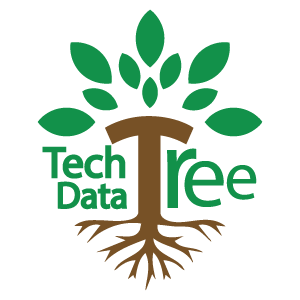Real-World Uses of Autonomous Decision-Making Now
Think a world in which cars drive themselves, doctors receive help from smart tools, and machines make quick choices without waiting for people. This is what we mean by autonomy in decision-making. It occurs when machines or systems can make rulings on their own using rules, facts, and experience—just as humans do, but faster and more correctly. This concept is not simply science fiction. It’s already woven into many things around us. Self-driving technology are rapidly expanding, ranging from smart delivery robots to hospital help systems. These AI-powered robots are designed to act freely based on the situation. They follow specific stages called as autonomous decision processes, which help to improve life, work, and safety. Many of these AI systems, known as robots or software agents, work behind the scenes in sectors, travel, and even shopping apps. Businesses may now rely on AI-powered systems that act smarter on a daily basis thanks to AI modeling of behavior and choices agents. Why Autonomous Decision-Making Matters What’s the point of loving? Because making decisions on their own saves people time, money, and effort. It makes life simpler and the business more efficient. When businesses adopt AI-powered business models, they often realize major advantages. These systems aid in global decision-making, which means they can manage a large number of jobs without need more workers. Take AI change in manufacturing or AI adoption in rail systems—both result in major cost savings and efficiency gains. Data-based choices enable firms to avoid mistakes. Machines do not grow tired or bored. That is why AI in business planning grows so popular. It aids in business efficiency and enables firms to work more quickly thanks to actionable AI. According to McKinsey analysts, firms that use AI-augmented work can increase productivity by up to 40%. Data-driven organizations that embrace this technology consistently outperform their competitors by making faster, more informed strategic decisions. It is an important part of the AI revolution, helping with attaining objectives and providing a unique competitive benefit. Real-World Applications of Autonomous Decision-Making Let’s look at how autonomous decision-making is applied in real life. Healthcare In hospitals, AI in healthcare helps doctors in making better choices. For example, AI for doctors may scan medical photos and detect early signs of cancer via image analysis. Applied machine learning algorithms power these medical tools to detect problems faster and with greater accuracy than traditional methods. Healthcare robots help decrease readmitted patients at the Mayo Clinic. AI-powered danger detection helps to ensure the safety of patients. These tools also promote specific healthcare, which provides treatment tailored to each individual. With hospital AI solutions, doctors may devote more time to patient care while smart tools seamlessly manage electronic health records (EHR) and generate automated alerts. It improves healthcare efficiency for everyone. Finance AI in finance has an important effect in banks. It aids in the rapid detection of scams and financial crime. Top firms employ AI-powered trading to purchase and sell stocks in seconds. Financial decision automation aids in making choices for loan users. Tools such as credit risk assessment check your financial history to figure out whether it is safe to lend. Real-time data analysis also helps banks spot market errors, allowing them to act quickly. Simple apps can provide specific financial advice using AI-powered ideas. Core banking automation is being used by large banks to speed up formerly tedious tasks. Manufacturing AI is used in factories to create products faster and better. Automated quality control is done by machines to detect mistakes. Robotic AI integration enables robots to work along with humans. Industrial automation enables firms to build more with less error. AI-enhanced tech is used by smart machines to avoid errors from happening. AI-powered drones can also help with security checks and delivery. To make big projects easier to manage, factories deploy optimize production and flexible AI systems. Transportation One of the most common instances is self-driving cars. These self-driving cars employ real-time navigation AI to decide where they must go and how quickly. In some cities, buses, trucks, and taxis have begun to utilize self-driving technology. Autonomous haulage tools benefit mining trucks, while autonomous fleet use has started in shipping. These machines use navigation AI systems to make quick choices, aided by 5G vehicle-to-everything (V2X) networks and a high-re maps. Logistics and Supply Chain When you receive a package on time, thank logistics AI. Many businesses are increasingly using AI-powered logistics to plan delivery and refill stock. Optimizing stock makes it easier to know what to order. Delivery planning and AI-powered drones speed delivery to your door. Unmanned drones scan warehouses, and package sorting and fleet planning are carried out without the help of people. Even future demand planning makes use of AI-powered analytics to predict what clients would want next. Customer Experience Have you ever interacted with a support bot? That is part of AI in customer experience. Customer service automation through AI chatbots responds to questions instantly, while AI-powered advice tools suggest what to buy next. Personal AI assistants, adaptable customer workflows, and targeted promos are all a few ways to improve the customer experience. All of them are powered by AI behavior modeling and add to large-scale modification. Big brands are turning to lead generating bots and next-best-action AI to keep you engaged and satisfied. Cybersecurity To ensure online safety, smart tools are needed. AI in cybersecurity aids in early identification of hackers. AI-powered threat detection detects unusual activity quickly. Anomaly alerts and real-time threat analysis may help avoid danger from growing. These tools operate 24 hours a day, seven days a week within an artificial intelligence (SOC). Advanced identity authentication systems powered by AI can verify users in milliseconds while detecting sophisticated impersonation attempts that would fool traditional security measures. Houses and borders are subject to robotic spying. People tend to be wary of black box AI, which shows the need of AI clarity and secure autonomous machines. Protecting data privacy is a main objective for safety tools that automate. The
Real-World Uses of Autonomous Decision-Making Now Read More »

